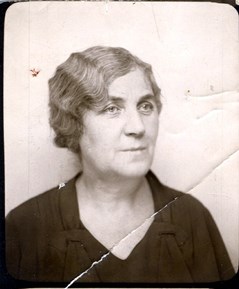Historically, March is a big month for Canadian women. From the appointment of the first female Supreme Court Justice to the country’s first licensed female pilot taking flight, there weren’t many milestones that Canadian women didn’t reach throughout various times in March.
When Bertha Wilson entered Dalhousie Law School in 1954, the dean reportedly told her, “Why don’t you just go home and take up crocheting?”
She showed him. Four years later, she graduated top of her class and was hired by Toronto’s prestigious law firm, Osler, Hoskin & Harcout LLP, in 1959.
Wilson was actually the first woman the firm had hired as a lawyer, but her legal trailblazing didn’t end there. She eventually became the first female partner at Osler, Hoskin and Harcout, and then in 1975 she was the first woman appointed to the Ontario Court of Appeal.
Seven years later, Wilson made history again when she was called to the Supreme Court of Canada, on March 4, 1982, making her the country’s first woman to ascend to that position.
Today, the Supreme Court of Canada includes Rosalie Silberman Abella, Andromache Karakatsanis, Suzanne Côté, and Chief Justice Beverley McLachlin.
While Wilson rose to new heights in the legal world, decades earlier, Eileen Vollick literally soared.
On March 13, 1928, she became the first licensed female pilot in Canada. Vollick had enrolled in the Elliot Air Service Flying School in 1927, where she mastered her flight training on a Curtiss JN-4, a First World War-era biplane known as a Jenny.
Although Vollick did not pursue a career in aviation, she was a daredevil who took up aerobatic flying and skydiving as hobbies. According to Shirley Render, Vollick also became the first woman in Canada to parachute into water, a feat she accomplished in the summer of 1928.
Eileen Vollick certainly blazed a trail into Canadian aviation history by breaking the gender barrier and setting a significant precedent for future female pilots. Deanna Brasseur and Jane Foster, similarly made history in 1989 when they became Canada’s first women to graduate from the rigorous CF-18 jet fighter program. Three years later, on Jan. 22, Dr. Robert Bondar, our country’s first female astronaut, took flying to a whole other level when she became the second Canadian to enter space.
Out on Prince Edward Island, Catherine Callbeck made political history of her own. At the end of March 1993, she became the first woman elected to a premiership in Canada.
To be sure, Callbeck wasn’t our country’s first female premier. That distinction goes to Rita Johnston, who was appointed to that position in British Columbia in 1991. Callbeck had previously served federally for PEI, but in early 1993 she was getting ready to return to provincial politics.
She became PEI’s Liberal leader in January, and then guided her party to the largest electoral victory in the history of Prince Edward Island. Callbeck and the Liberals picked up 31 of a possible 32 seats for a decisive win, making her the first woman to be elected premier of a Canadian province.
And it was just a few months after Callbeck’s landslide victory that, on June 25, 1993, Kim Campbell officially took office as prime minister.
But you don’t only have to look to March to find notable achievements from Canadian women. They make history year round, especially here in our own backyard.
On January 6, 1936, Barbara Hanley was elected mayor of Webbwood, Ontario (just outside of Espanola), giving her the distinction of becoming Canada's first female mayor. She would serve eight consecutive terms as mayor of Webbwood before stepping away from municipal politics in 1944.
Thirty years after Hanley was elected, Grace Hartman followed suit and became Sudbury’s first female mayor. For nearly two decades, Hartman had steadfastly served as a city councillor, and later, as deputy mayor.
But it was under tragic circumstances that she assumed the mayoralty. In October 1966, less than a year into his term as mayor, Max Silverman passed away in office. Following his death, Hartman was appointed as his successor.
Although her time as mayor was brief, Hartman still made quite an impact. She championed the extension of Bell Park as part of Canada’s Centennial celebrations in 1967. Fitting that the amphitheater that now resides there bears her name.
Of course, these were just some of the moments in March where Canadian women left their mark. While these accomplishments were unquestionably significant, and novel in their own time, we can only hope that there comes a day when these types of achievements are no longer viewed as newsworthy, but are simply standard regardless of gender.
In honour of Canada’s sesquicentennial this year, Sudbury.com, with the help of our resident historian Dr. Mike Commito, is going back to the archives each month throughout 2017 to highlight some important memories and events in our nation’s history. We hope to provide you with some interesting stories about our past as we collectively celebrate, and analyze, what #Canada150 means.
